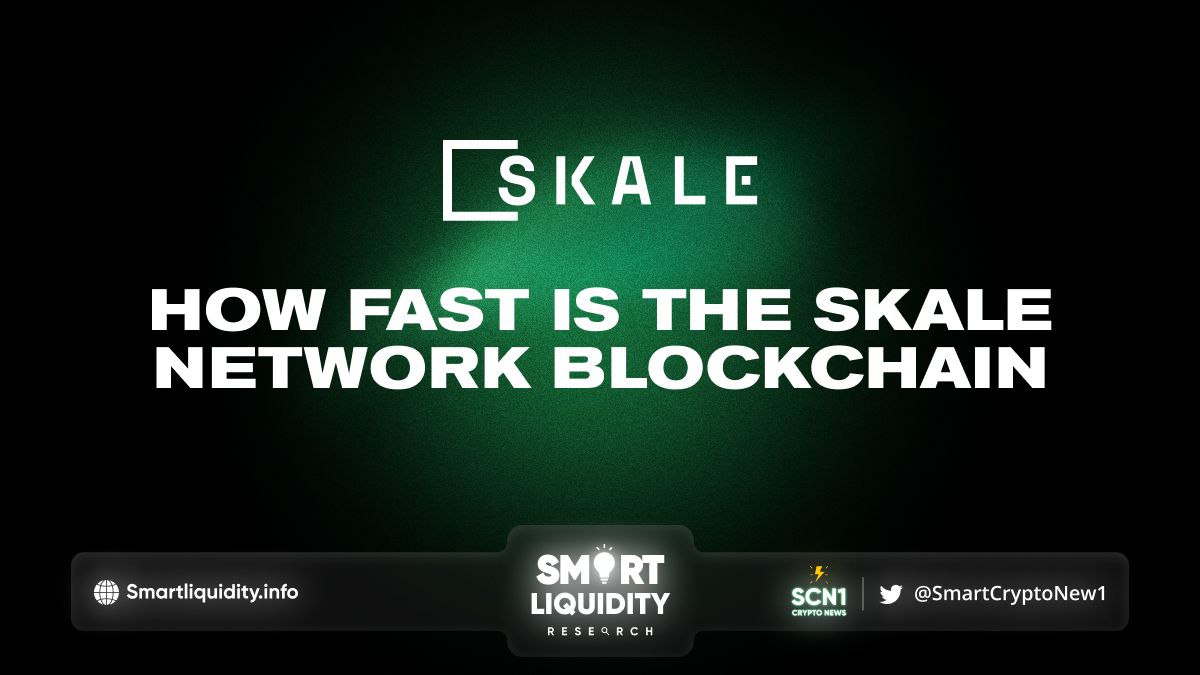Crypto University Spotlight: Skale


Crypto University Spotlight: Skale. What is Skale Network? Skale Network is a blockchain platform designed to provide a high-performance infrastructure for decentralized applications (dApps). It is built on top of the Ethereum blockchain and uses a unique implementation of sidechains to improve scalability and reduce costs.
One of the main benefits of Skale Network is its ability to create multiple independent chains that can run in parallel, which allows it to support a large number of dApps and transactions without the network congestion and high gas fees that can occur on the main Ethereum chain. Skale Network also uses a Proof of Stake (PoS) consensus mechanism to ensure network security and reduce energy consumption.
Skale Network provides a range of tools and services to help developers build and deploy dApps, including a software development kit (SDK), a user interface for managing sidechains, and a decentralized storage solution. It also supports interoperability with other blockchains and off-chain systems, making it easy to integrate with existing applications
The Skale Network Token
SKL is the native cryptocurrency of Skale Network, use for paying transaction fees and participating in network governance. Skale Network has been gaining popularity among developers and investors in the blockchain space due to its scalability, flexibility, and ease of use.
How Does Skale Blockchain Works?
Skale Network is a blockchain platform that uses sidechains to provide high performance and scalability for decentralized applications (dApps).
Here’s a high-level overview of how Skale works:
- Sidechain creation
Skale Network allows developers to create their own independent sidechains, which can run in parallel with the main Ethereum chain. Each sidechain has its own set of validators, who are responsible for maintaining the chain’s security and consensus. - Validator selection
Skale uses a unique Proof of Stake (PoS) consensus mechanism to select validators for each sidechain. Validators are selected based on their staked SKL tokens and their past performance, measures by a reputation system. Once selected, validators are responsible for validating transactions and adding new blocks to the sidechain. - Interoperability
Skale Network design is interoperable with other blockchains and off-chain systems, which allows developers to easily integrate their dApps with existing systems. Skale provides tools and services for cross-chain communication and data exchange, which makes it possible to transfer assets and data between different chains. - Gas fees
Skale uses a gas fee model similar to Ethereum, where each transaction requires a certain amount of SKL tokens to be paid as a fee. The gas fee is use to compensate validators for their work and to incentivize them to maintain the network’s security and performance. - Decentralized storage: Skale Network also provides a decentralized storage solution called Skale File Storage (SFS), which allows dApp developers to store and access large amounts of data in a decentralized and secure way.
Overall, Skale Network’s sidechain architecture and PoS consensus mechanism enable it to provide a scalable and high-performance infrastructure for decentralized applications, while also maintaining security and decentralization.
How Fast is the Skale Blockchain
Skale Network design a high-pe is rformance blockchain platform, capable of processing a large number of transactions per second (TPS). Skale achieves this high performance through the use of sidechains, which can run in parallel with the main Ethereum chain and provide additional capacity for processing transactions.
The actual TPS of Skale varies depending on a number of factors, including the number of sidechains running, the number of validators, and the complexity of the transaction process. Skale Network claims to have achieved TPS rates of up to 2,000 transactions per second in its testnet environment.
In addition to its high TPS rates, Skale Network also provides low-latency transaction processing, which means that transactions confirm quickly and reliably. This low latency is important for dApps that require fast and responsive transaction processing, such as gaming and financial applications.
Skale Network’s high performance and low latency make it an attractive platform for developers looking to build dApps that require high throughput and fast transaction processing.
Projects building on the Skale Network
There are many projects currently building on Skale Network, covering a range of different use cases and industries. Here are some examples of projects that are building on Skale:
1. Unstoppable Domains
Unstoppable Domains is a blockchain domain name service that allows users to replace their traditional cryptocurrency addresses with human-readable names. The company is using Skale Network to improve its transaction processing speed and reduce costs.
2. RAI Finance
RAI Finance is a decentralized finance (DeFi) platform that provides cross-chain trading and lending services. The platform is built on Skale Network to take advantage of its high scalability and low transaction fees.
3. MintGate
The MintGate is a platform that allows creators to monetize their content through NFTs and gated access. MintGate is using Skale Network to provide fast and efficient transaction processing for its users.
4. NiftyRoyale
NiftyRoyale is a gaming platform that allows users to play games and earn rewards in the form of NFTs. The platform is built on Skale Network to provide fast and reliable transaction processing, which is critical for real-time gaming.
5. Sperax
Sperax is a blockchain platform that provides infrastructure and tools for building decentralized applications. The company is using Skale Network to provide scalable and high-performance infrastructure for its customers.
These are just a few examples of the many projects currently building on the Skale Network. As Skale continues to gain popularity in the blockchain space, it is likely that more projects will develop on its infrastructure.
JON SKALE NETWORK FOR MORE UPDATES
Website | Twitter | Discord | GitHub




